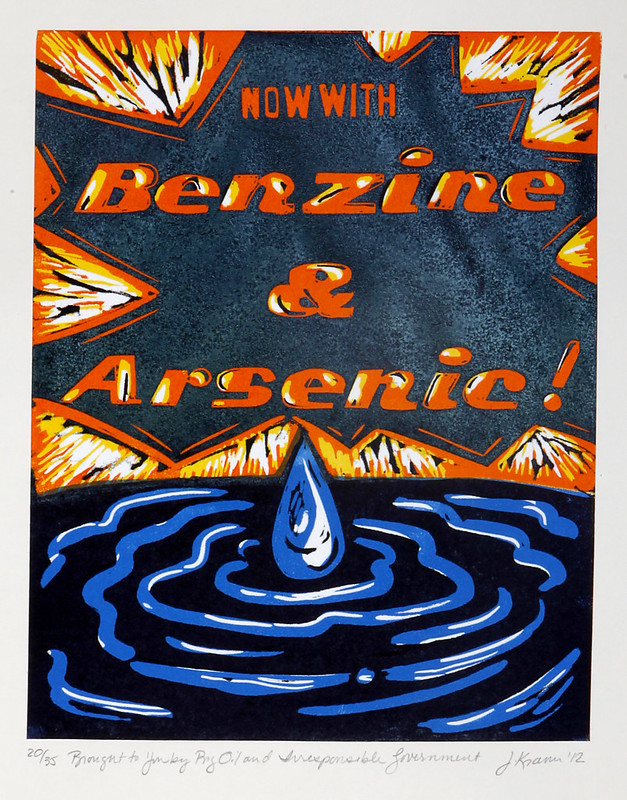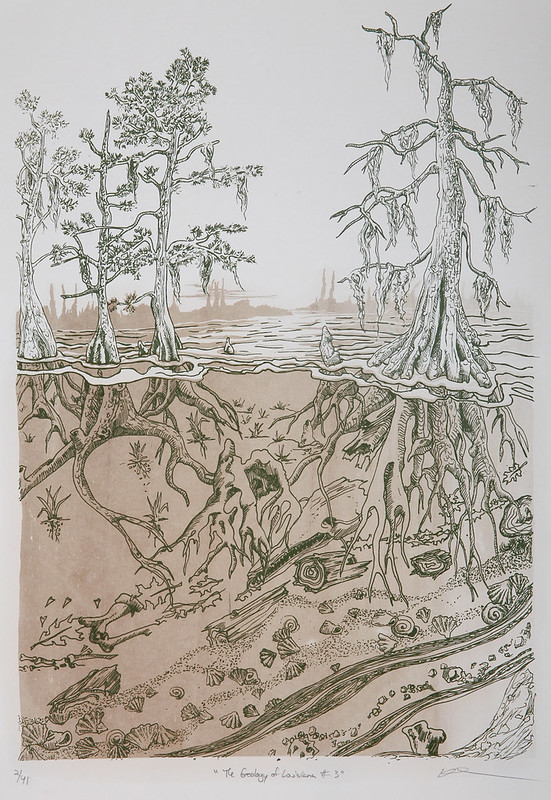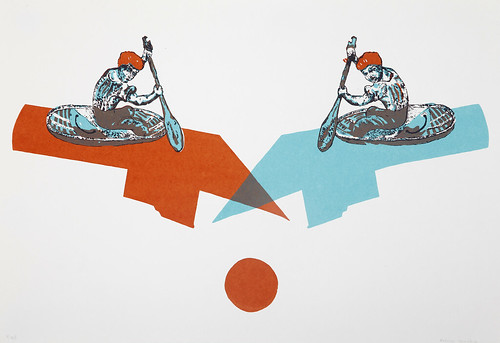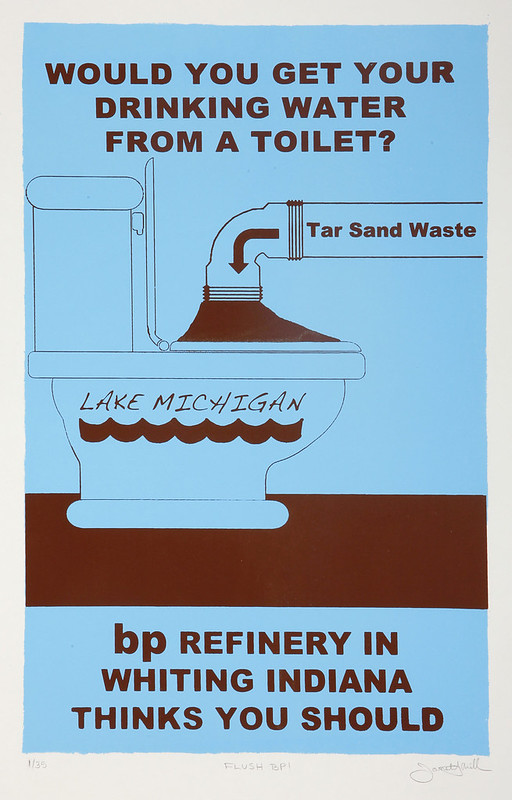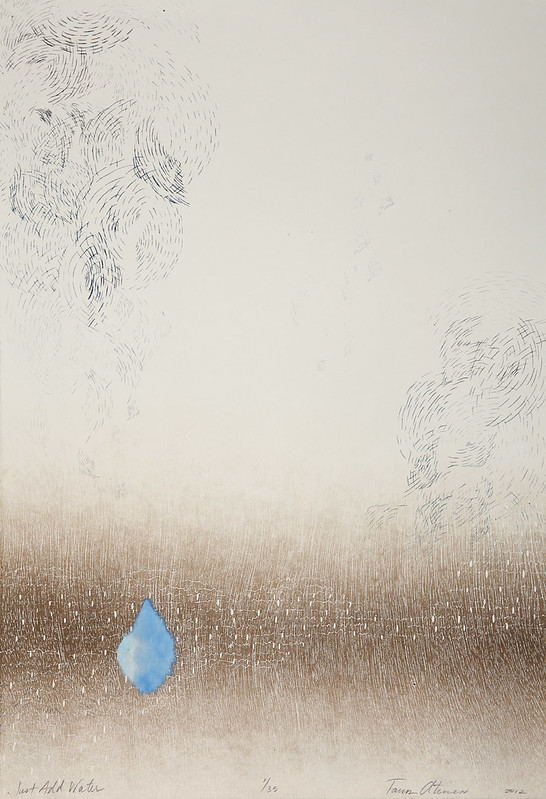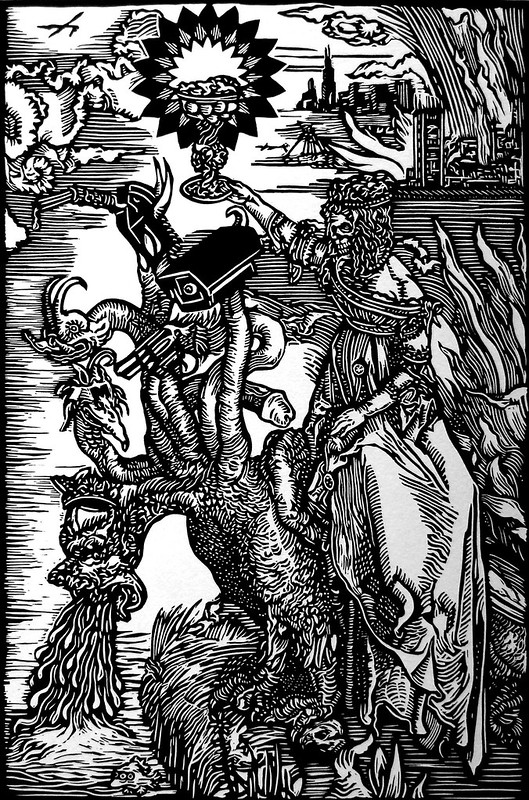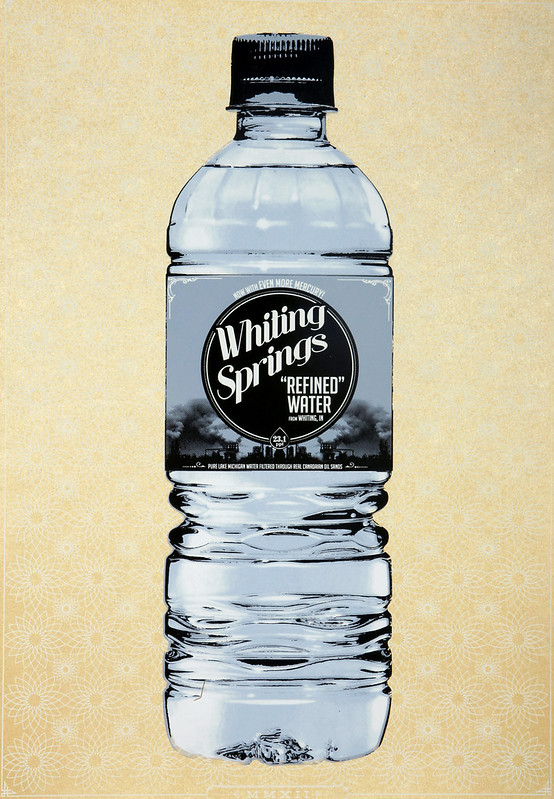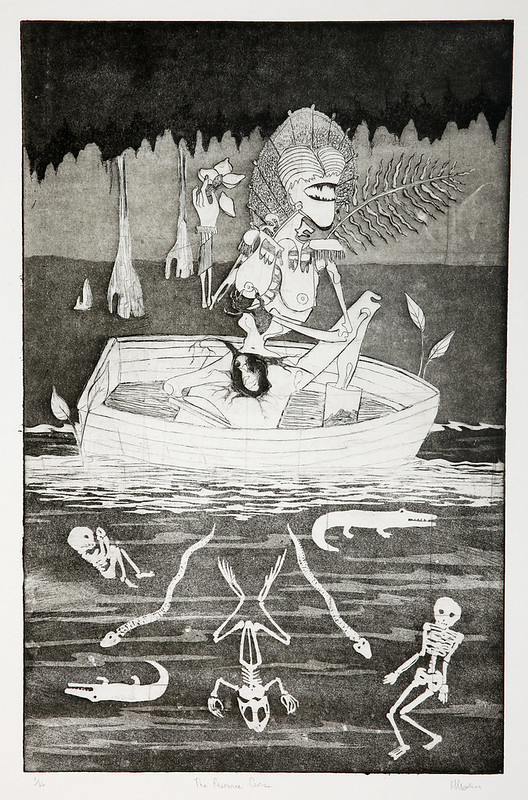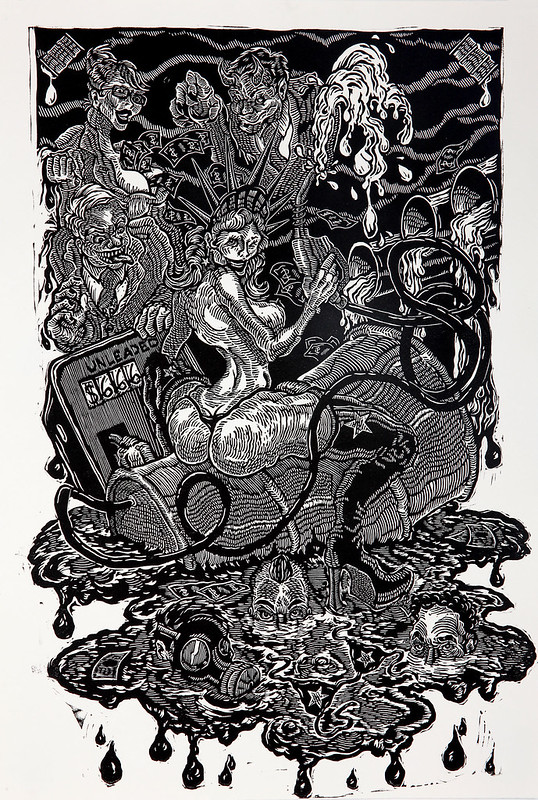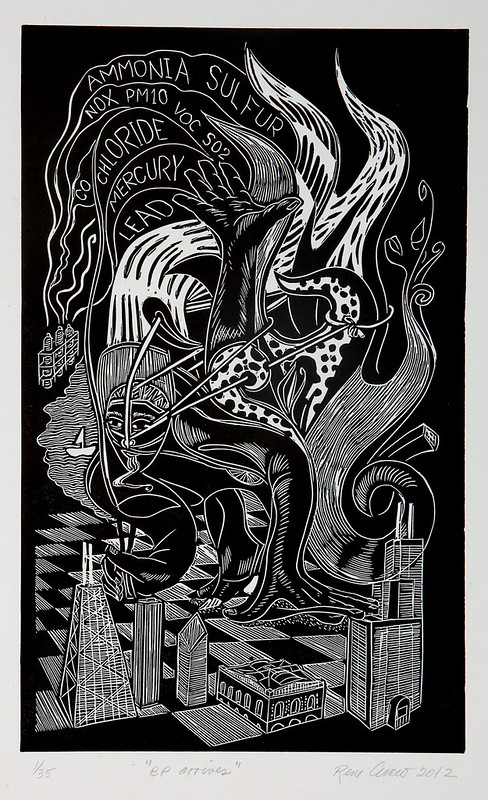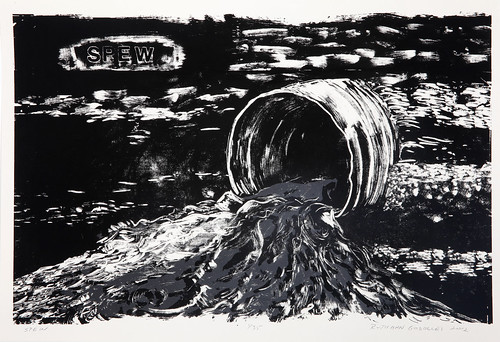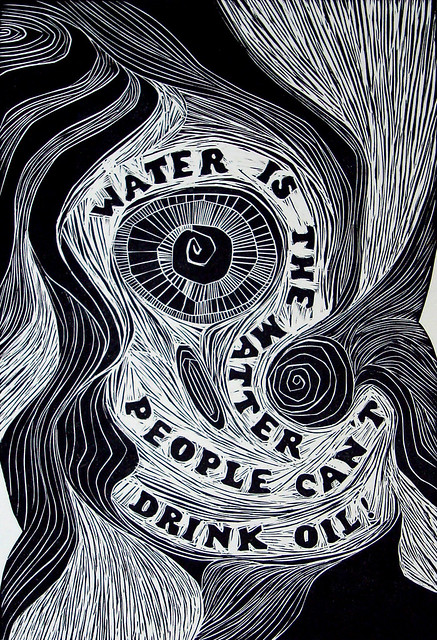"Brought to You by Big Oil and Irresponsible Government" Relief Print by Jill Kramer
Bio:Kramer is a printmaker based in Oak Park, Illinois. She is a native of Chesterland, Ohio and received her BFA from Kent State University. She obtained her Masters of Arts in Art Education from the School of the Art Institute of Chicago and is currently the Education Center Supervisor for the Elmhurst Art Museum.
Jill’s current artistic practice focuses on landscape and it’s deterioration, through natural and man made causes. She uses relief and screen print methods to investigate her inquiries into this natural erosion and express her thoughts on idealized scenery. Her most recent projects have revolved around issues that allow her to contribute to group dialogue and participate in collective action on social justice environmental issues.
Jill works from her home studio where she lives with her husband and two children.
Artist's Statement:
I grew up in a rural area of North East Ohio. On hot summer days, nothing was better than cranking the water pump out side to take a gulp of ice cold well water from the natural spring on my parents property. I can still remember the slight metallic taste of iron that lingered in my mouth as the refreshing liquid ran down my throat.
Nowadays, I drink from the same water source that all Chicago area residents rely - Lake Michigan. And while this water still quenches a thirst, it remains flat in it’s delivery. The thought of reaching for a glass of water, with tiny amounts of benzene and arsenic from the runoff of Dilbit that has been transported through pipelines that cross the United States is a bit unsetteling. When Dilbit spills, as it did in 2010 outside of Marshall, Michigan, ground water is contaminated with small amounts of benzine and arsenic. These chemicals are used to thin the heavy oil so that it can flow easily through pipelines. When there is a spill or leak in these lines, ground water and drinking water becomes contaminated. Benzine is a known cancer causing chemical and arsenic has been used mainly as an insecticide for agricultural usage.
I cannot image now, taking a sip from the water pump of my childhood, and having to wonder if I was consuming cancer causing chemicals and known poisons at the expense of trying to quench my thirst.
